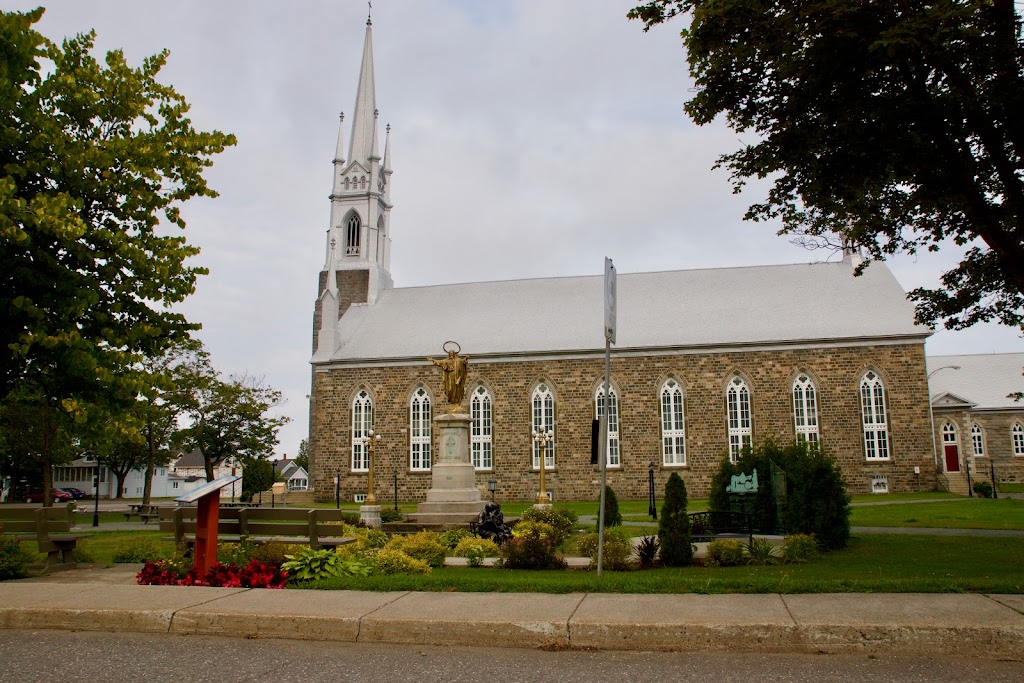Décollation-of-St-John-the-Baptist Catholic Church
(418) 898-2682
Contact and Address
| Category: | Church, Point of interest, Establishment, Place of worship, |
|---|---|
| Address: | 150 Rue St Jean Baptiste, L'Isle-Verte, QC G0L 1K0, Canada |
| Postal code: | G0L 1K0 |
| Phone: | (418) 898-2682 |
| Website: | http://www.dioceserimouski.com/egl/lisle-verte.html |
Location & routing
Most Recent Reviews
(April 22, 2020, 1:31 pm)Beautiful church. Magnificent renewed Casavan organ. Some visits available in the summer time. Inquire if you happen to be there when a concert is scheduled.
(September 19, 2019, 2:14 pm)The most beautiful or rich of the lower St Laurent with that of Trois Pistoles
(September 8, 2019, 2:15 pm)What a beautiful monument it is necessary to preserve as such.
(April 4, 2018, 10:57 pm)The church of La Décollation-de-Saint-Jean-Baptiste is a place of worship in the Catholic tradition erected from 1846 to 1855. The squared stone building has a plan composed of a rectangular nave ending in a flat apse. It is topped with a gable roof. A bell tower crowned with a spire and a cross rises in the center of the facade with three pointed arch portals. A chapel-sacristy is attached to the apse.
The church of La Décollation-de-Saint-Jean-Baptiste is of heritage interest for its historical value. The place of worship is located on a site occupied for religious purposes since the beginnings of the locality. Granted in the 17th century, the lordship of Île-Verte was, however, mainly occupied from the 18th century. At this time, the mission was served by missionary priests. The land where the church stands today was officially given by the lord in 1778. The wooden place of worship built there from 1798 is probably the third in the mission. The population of L'Isle-Verte grew considerably at the beginning of the 19th century and the parish was canonically established in 1828. It was in this context that the construction of the church was authorized in 1833, which would finally begin 13 years later. The place of worship therefore bears witness to an important period in the history of the locality. Furthermore, the land on which the church stands includes an area of archaeological potential which could contain, in particular, remains of an old presbytery and an outbuilding.
The church of La Décollation-de-Saint-Jean-Baptiste is also of heritage interest for its architectural value. Several notable architects from the second half of the 19th century and the beginning of the 20th century helped give the neo-Gothic style building its current appearance. The original plans of the church built between 1846 and 1855 are attributed to Charles Baillairgé (1826-1906). The latter, from an important family of sculptors and architects, designed several places of worship and other important buildings, including the old prison on the Plains of Abraham. The exterior of the church was completed in 1855 under the supervision of François-Xavier Berlinguet (1830-1916), also from a family of sculptors and architects. The latter will also work with his father, Louis-Thomas Berlinguet (1789-1863), on the creation of the original interior decoration of the church. The place of worship was then modified according to the plans of David Ouellet (1844-1915), a prolific architect from the turn of the 20th century. In 1890, the bell tower placed on the ridge of the church was replaced by the current bell tower. The same year, a chapel-sacristy was added against the apse. The church of La Décollation-de-Saint-Jean-Baptiste is therefore a representative witness to the religious architecture of the second half of the 19th century.
The church of La Décollation-de-Saint-Jean-Baptiste is also of heritage interest for its architectural and artistic values based on the quality of its interior decor. In 1906, the factory adopted a resolution to invite Canon Georges Bouillon (1841-1932) to propose ways of beautifying the interior...The plans for the new interior decor of the church of L'Isle-Verte were drawn up by the architect Thomas Raymond (1853-1923) based on Bouillon's sketches. The work was carried out from 1914 to 1917. The false vault with multiple ribs, the fasciculated pillars, the abundance of sculpted elements covering a large part of the surfaces and the fixed pieces of furniture, such as the pulpit topped with an openwork spire, constitute one of the most accomplished neo-Gothic influenced interiors of Quebec Catholic religious architecture of this period. The whole integrates in a harmonious and coherent manner some older elements, including the main altar probably designed by Louis-Thomas Berlinguet between 1857 and 1862.
Source: Ministry of Culture and Communications of Quebec, 2015.
(November 1, 2014, 7:52 pm)Any body born in l, isle verte by name of santerre
Photos of Décollation-of-St-John-the-Baptist Catholic Church








